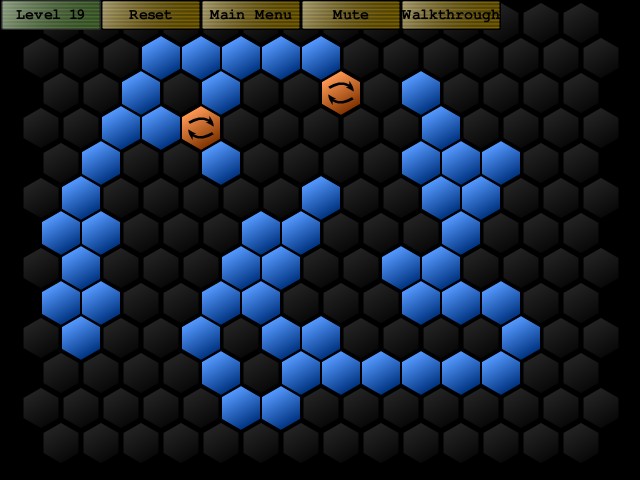

This allowed me to animate the intensity and direction of the blur without impacting upon any other scene elements. I filled each new selection with a strong yellow colour then added a directional motion blur effect to each cell. This effect was created by creating a new pixel layer for the eyes. The next step was to animate glowing yellow eyes. This is how my animation looked once I was happy the blocking of some of the main shapes. I carried on using this technique for every frame, and once finished extended the cube down to the bottom of the canvas to give the creature a body. Next, I used the paint bucket to fill each outlined area. I used the line tool to trace the outline around each colour ignoring shade altogether. I lowered the opacity of the reference animation to make painting above, on a new pixel layer, more visible.
#Rotating in hexels full#
This gives the option to add each image on its own layer of the entire sequence as a single layer animation.Ĭhoosing the latter meant I could see the full animation like a flip book and I now had my rotoscoping reference. I exported the frames of the animation and then imported the entire sequence of images into Hexels, all at once, by simply dragging it onto my hexels canvas. I started by creating a short 180° turn amination with a 3d model of the Hexels monkey head Logo in a 3D package. With the new Pixel Layers allowing me to draw curves and lines in any direction, I wanted to see if it was possible to Rotoscope over imported images using the new mode. From classics like Bakshi’s ‘Lord of the Rings’ to modern anime production, rotoscope can be used in many interesting ways.īeing told Hexels was getting Pixel Mode, with the ability to combine Pixel Layers and Trixel Layers in the same document I saw this as a real game-changer for the software. I usually do some texturing and color tweaking in Photoshop (as described in this post) after all of the Hexels work is done.I’m Mark Knight from Marmoset and I’ve always been fascinated with rotoscope animation. The sky is on yet another layer below them. Then I arranged them in Photoshop! They are on a layer behind the rocks and grass. In the document tab I set canvas color to transparent and then doodled some clouds with the brush set to low opacity. …But that blue sky needs some puffy clouds. When I need to add extra elements to a Hexels picture I just draw them off to the side and then combine them with Photoshop. I also put in some blue sky and randomized the checkerboard a bit.

Usually I fix this my making one side lighter and the other darker, like in the top left corner of this image. The area circled in red is a bit of a problem because the two grassy areas shouldn’t actually be connected in 3D space. I added a checkerboard pattern to the grass and put some highlights on the water with the edge tool.

The blended/transparent water is made by tweaking the bush opacity settings. I started by doodling out this structure: Here are some process screenshots of a isometric trixel landscape. Everything is just an extension of this basic shape: On the left is a monocolor example, on the right is the sort of coloration that you’d use for a minecrafty rock with grass on top. This will allow you to construct tricolor hexagons like these:
#Rotating in hexels how to#
I’ve been getting a lot of requests for a tutorial, so here’s a post about how to make isometric floating islands and stuff in Hexels Pro.įirst, in Hexels you’ll want to set the grid to trixel mode and tick the “Rotate 90°” box:


 0 kommentar(er)
0 kommentar(er)
